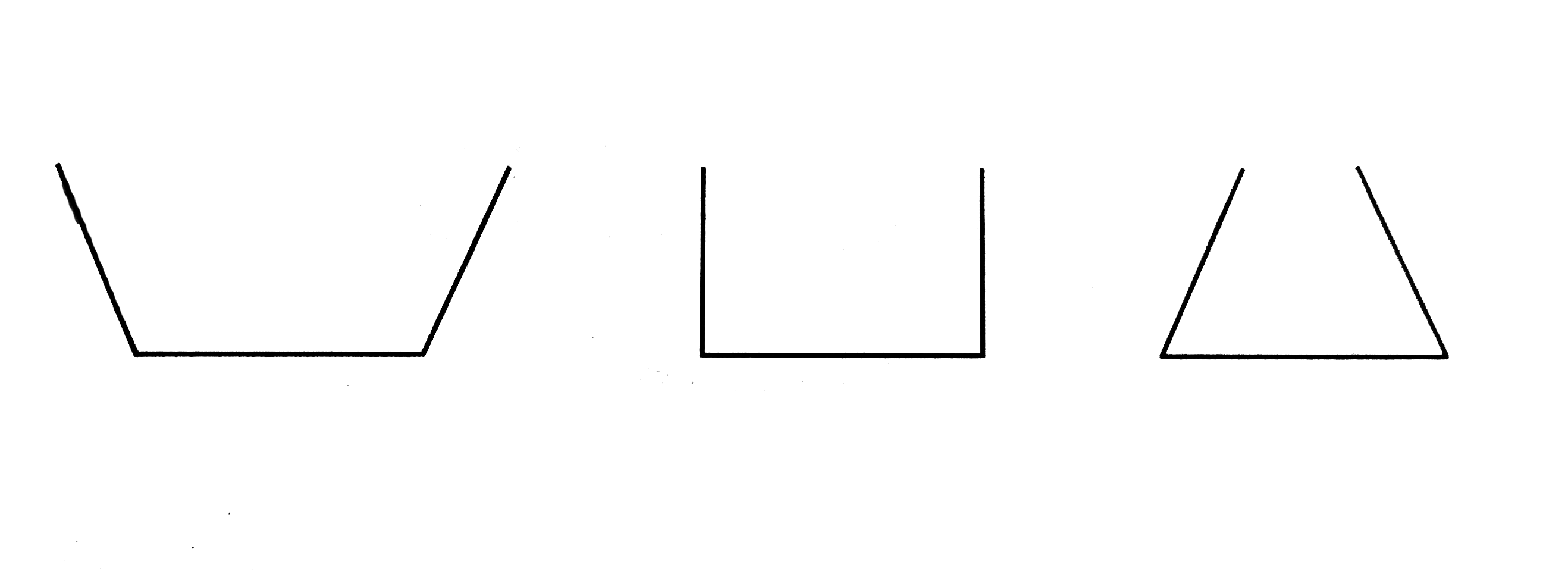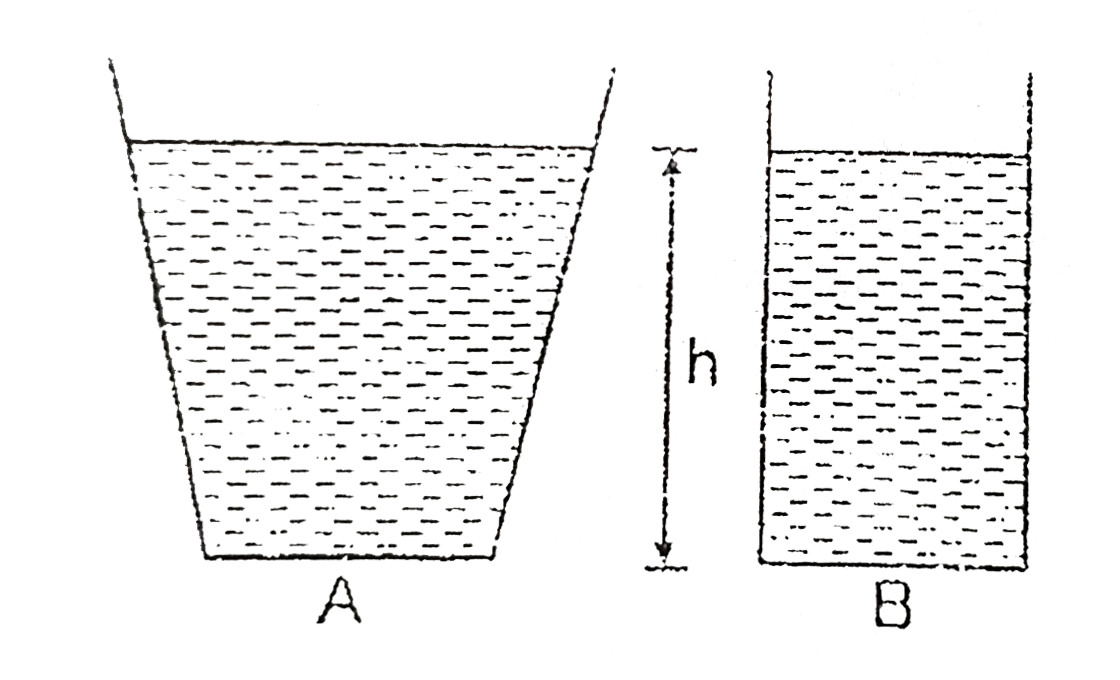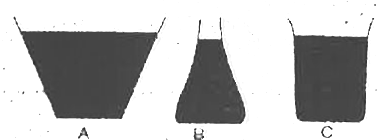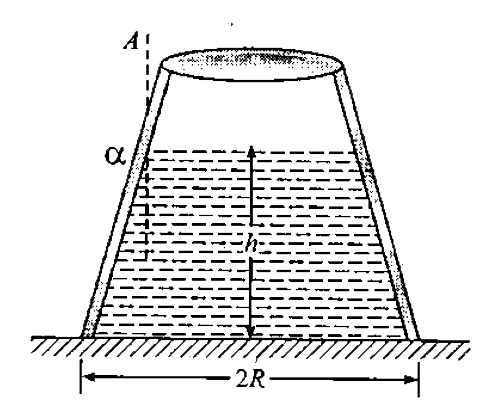Two vessels A and B have same base area. Equal volumes of a liquid are poured in the two vessel to different heights hA and hB(hB>hA). In which vessel, the force on the base of vessel will be more?
The correct Answer is:B
To determine in which vessel the force on the base will be more, we can follow these steps:
Step 1: Understand the problem
We have two vessels, A and B, with the same base area. Equal volumes of liquid are poured into each vessel, but the heights of the liquid differ, with hB>hA.
Step 2: Define the forces acting on the base
The force exerted on the base of each vessel can be calculated using the formula:
F=P×A
where F is the force, P is the pressure at the base, and A is the area of the base.
Step 3: Calculate the pressure at the base of each vessel
The pressure at the base of a liquid column is given by:
P=ρgh
where ρ is the density of the liquid, g is the acceleration due to gravity, and h is the height of the liquid column.
For vessel A:
PA=ρghA
For vessel B:
PB=ρghB
Step 4: Calculate the forces on the base of each vessel
Using the pressure calculated in the previous step, we can find the forces on the base of each vessel.
For vessel A:
FA=PA×A=(ρghA)×A
For vessel B:
FB=PB×A=(ρghB)×A
Step 5: Compare the forces
Since the base areas A are the same for both vessels, we can compare the forces by comparing the heights:
FA=ρghAA
FB=ρghBA
Given that hB>hA, it follows that:
FB>FA
Conclusion
The force on the base of vessel B is greater than the force on the base of vessel A.
We have two vessels, A and B, with the same base area. Equal volumes of liquid are poured into each vessel, but the heights of the liquid differ, with hB>hA.
The force exerted on the base of each vessel can be calculated using the formula:
F=P×A
where F is the force, P is the pressure at the base, and A is the area of the base.
The pressure at the base of a liquid column is given by:
P=ρgh
where ρ is the density of the liquid, g is the acceleration due to gravity, and h is the height of the liquid column.
PA=ρghA
PB=ρghB
Using the pressure calculated in the previous step, we can find the forces on the base of each vessel.
FA=PA×A=(ρghA)×A
FB=PB×A=(ρghB)×A
Since the base areas A are the same for both vessels, we can compare the forces by comparing the heights:
FA=ρghAA
FB=ρghBA
FB>FA
The force on the base of vessel B is greater than the force on the base of vessel A.
Topper's Solved these Questions
- BOOK - DC PANDEY ENGLISHCHAPTER - FLUID MECHANICSEXERCISE - Subjective Question2videos
FLUID MECHANICS
- BOOK - DC PANDEY ENGLISHCHAPTER - FLUID MECHANICSEXERCISE - Level 2 Single Correct36videos
FLUID MECHANICS
- BOOK - DC PANDEY ENGLISHCHAPTER - FLUID MECHANICSEXERCISE - Level 1 Single Correct49videos
FLUID MECHANICS
- BOOK - DC PANDEY ENGLISHCHAPTER - EXPERIMENTSEXERCISE - Subjective15videos
EXPERIMENTS
- BOOK - DC PANDEY ENGLISHCHAPTER - GENERAL PHYSICSEXERCISE - INTEGER_TYPE2videos
GENERAL PHYSICS
Similar Questions
The three vessels shown in figure have same base area. Equal volumes of a liquid are poured in three vessels. The force on the base will be
 View Solution
View SolutionEqual volumes of a liquid are poured in the three vessels A,B and C(h1<h2<h3). All the vessels have the same base area. Select the correct alternatives.
 View Solution
View SolutionEqual volumes of a liquid are poured in the three vessels A,B and C(h1<h2<h3). All the vessels have the same base area. Select the correct alternatives.
 View Solution
View SolutionEqual mass of three liquids are kept in three identical cylindrical vessels A, B and C. the densities are ρA,ρB,ρCwithρA<ρB<ρC. The force on the base will be
View SolutionTwo vessels A and B of different shapes have the same base area and are filled with water up to the same height h (see figure). The force exerted by water on the base is FA for vessel A and FB for vessel B. The respective weights of the water filled in vessels are WA and WB. Then
 View Solution
View Solution_E01_040_Q01.png)
Two vessels A and B have the same base area and contain water to the same height but the mass of water in A is four times that in B. The ratio of the liquid thrust at the base of A to that at the base of B isView SolutionWater is poured to same level in each of the vessels shown in the figure , all having the same base area . In which vessel is the force experienced by the base maiximum ?
 View Solution
View SolutionA conical vessel wihout a bottom stands on a table. A liquid is poured with the vessel & as soon as the level reaches h, the pressure of the liquid raises the vessel. The radius of the base of the vessel is R and half angle of the cone α and the weight of the vessel is W. What is the density of the liquid ?
 View Solution
View SolutionThree identical vessels A,B and C contain same quantity of liquid. In each vessel balls of different densities but same masses are placed. In vessel A, the ball is partly submerged, in vessel B, the ball is completely submerged but floating and in vessel C, the ball has sunk to the base. If FA,FB and FC are the total forces acting on the base of vessels A,B and C, respectively, then
 View Solution
View SolutionTwo vessels A and B having equal volume contain equal masses of hydrogen in A and helium in B at 300 K. Then, mark the correct statement?
View Solution

